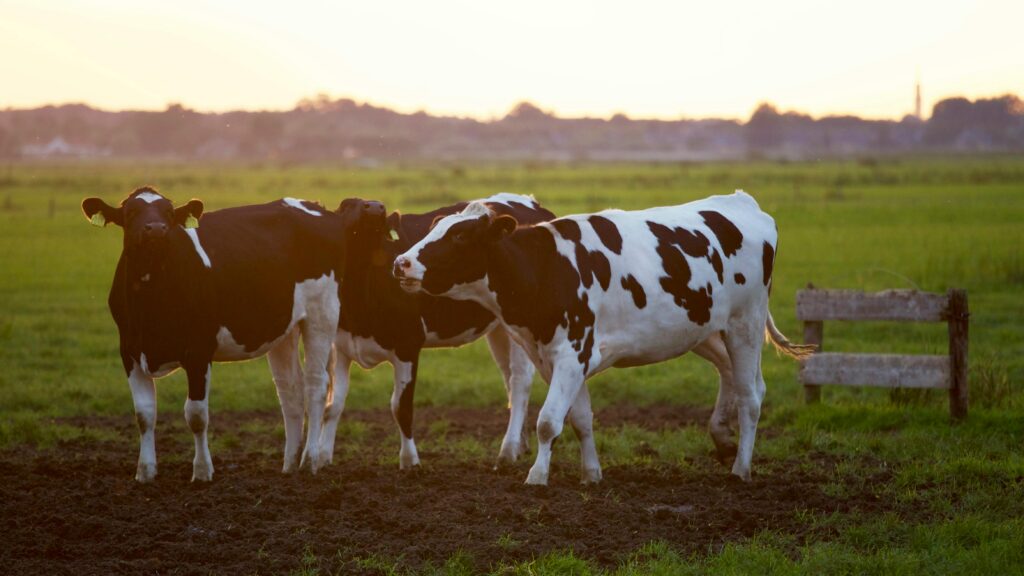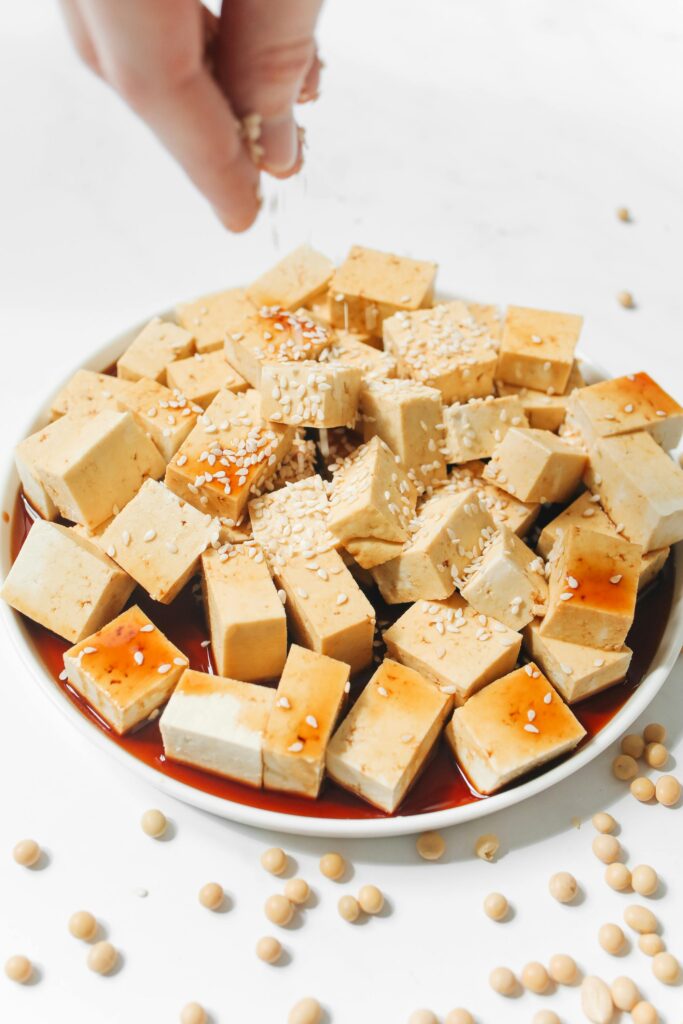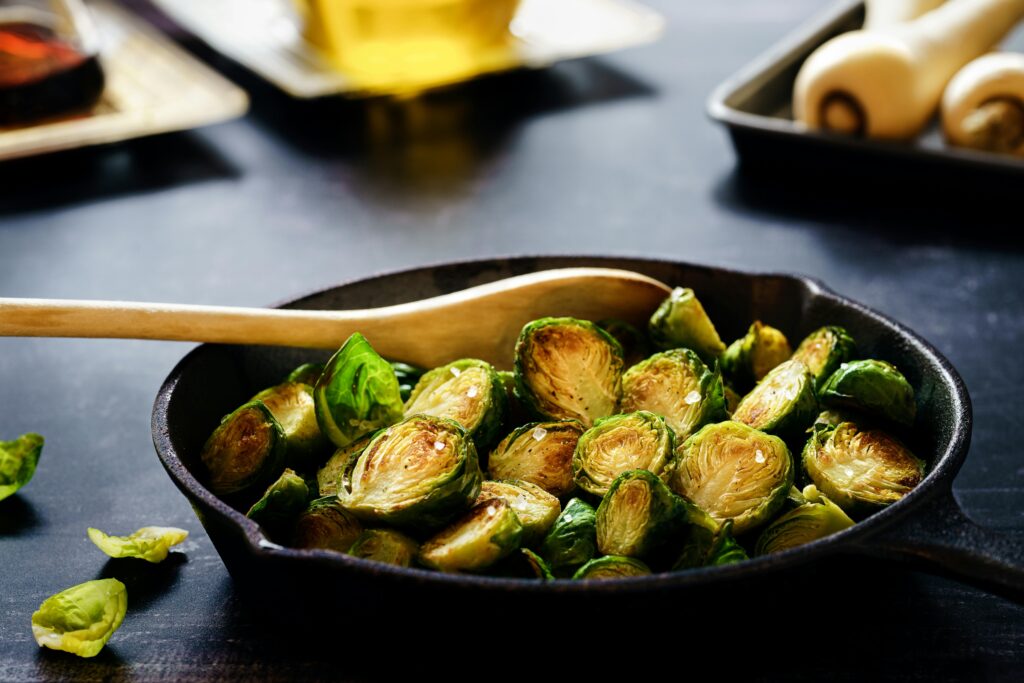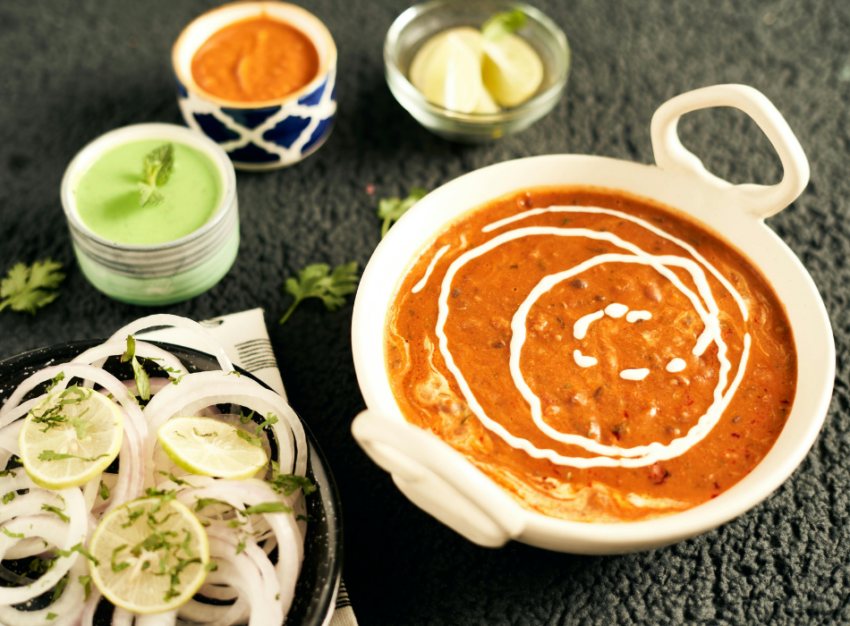I stumbled my way towards vegetarianism. First, my dad went vegetarian when I was little. Then, my sister went vegetarian a few years later.
When my sister decided to go vegan, I felt bad that I was still eating meat. Plus, I wasn’t eating much meat by that point anyways. I figured I would try being vegetarian for a month.
It started out as a test, but I just kept going. Now, I’ve been vegetarian for 12 years, and I can’t see myself ever going back to eating meat.
Initially, I stopped eating meat to follow in my family’s footsteps, but over time, I’ve realized that being vegetarian is an important part of my identity. I don’t feel comfortable at the thought of eating dead animals.
Of course, everyone has their own reasons for eating or not eating meat. By this point, it’s easy for me to be vegetarian, but I realize that the thought of cutting out meat entirely could seem intimidating.
Here are some tips for cooking and eating vegetarian, whether you’re looking to reduce your meat consumption or are transitioning to a fully vegetarian lifestyle.
Fast facts about animal agriculture

Before getting started, it’s important to think about reasons for going vegetarian. Environmentally speaking, meat consumption contributes significantly to both climate change and deforestation.
Meat and dairy production together account for 14.5% of global greenhouse gas emissions. Of all foods, beef and lamb are responsible for the most greenhouse gas emissions per kilogram. It’s not the cows’ and sheep’s fault, but they’re ruminants and produce a lot of methane, a greenhouse gas that’s much more powerful than carbon dioxide. On the other hand, emissions from plant-based foods tend to be 10 to 50 times smaller than those from animal products.
Meat production also requires significant land use for both raising livestock and growing their feed. This includes destructive deforestation in the Amazon. More than a quarter of land worldwide is used to either graze or grow food for farm animals—land that could instead be used to grow food for humans.
Of course, there are other reasons to try going vegetarian as well! Being vegetarian helps prevent harm to animals and often has health benefits.
I’ve shared why I went vegetarian, but why are you interested in going vegetarian? Knowing this can help you stay motivated at those times you’re craving meat!
Tips for going vegetarian
With some planning and preparation, it’s easy to be vegetarian! Here are a few tips to get started.
Start small
You don’t need to cut out meat cold turkey. Gradually reducing your meat consumption allows you to ease into it and make adjustments to fit your lifestyle.
Depending on how much meat you eat currently, you might consider going meat-free for one meal a day, or for one day a week. For example, Meatless Monday is a global movement that encourages people to avoid meat on Mondays (check their website for recipes and tips!).
Replace, don’t subtract
When going vegetarian, it’s easy to focus on what you’re removing from your diet. But it’s important to replace meat with other foods to ensure you get enough protein and other nutrients.
For example, you wouldn’t want to go from eating pasta with Bolognese sauce to eating plain spaghetti with tomato sauce. Try replacing the meat with lentils or tofu to make it a complete meal. Other sources of protein can include nuts and seeds, hummus, or (depending on your diet) eggs and cheese.
Try tofu and meat alternatives

When thinking about replacements for meat, tofu and meat alternatives are some of the most obvious. Tofu is a protein-rich food made from processed soybeans. Because it doesn’t have much flavour, it can be crumbled, fried, baked, marinated and more.
Meat alternatives, meat substitutes or mock meats are plant-based alternatives to products like hamburgers, ground meat, sausages, bacon, meatballs and chicken nuggets. You could also try soy curls, which are non-perishable (just add water). There are many brands out there, so you’ll be sure to find your favourite!
Learn more about tofu and other meat alternatives here.
Love your legumes
Besides meat alternatives, you’ll want to incorporate legumes into your diet. Legumes include beans like kidney beans and black beans, chickpeas and lentils.
The benefit of legumes is that they are rich in protein, fibre and other nutrients. Plus, legumes are often cheaper than meat alternatives! Try using legumes in chili, curries, pasta dishes, refried beans or bean burgers.
Keep vegetarian staple ingredients on hand
It’s easier to commit to a dietary change if you have the necessary ingredients and substitutes on hand. Keep your pantry stocked with cans of beans and lentils, and your fridge with tofu and meat alternatives. You may also want to have a few convenience foods like frozen pizza and vegetarian dumplings.
This will give you several options for things to make. Your stomach will thank you when you’re preparing dinner at the last minute!
Know how to make easy vegetarian recipes
Learn how to make five to 10 easy vegetarian recipes—and ensure that you have ingredients for those meals on hand. Remember to include the different elements of a balanced meal, including a source of protein, grains and vegetables.
If you’re wondering where to start, there are lots of vegetarian cookbooks and blogs. A few websites that I like for finding vegetarian and vegan recipes are Cookie and Kate, Rainbow Plant Life, PlantYou and Minimalist Baker. Plus, you can check out Loving It Vegan and the vegan and vegetarian section on China Sichuan Food.
Do interesting things with vegetables

As a vegetarian, you end up eating a lot of vegetables. You may sometimes get relegated to bland dishes like plain salad or steamed vegetables. As someone who has historically been very picky, I can sympathize.
In fact, there are many things you can do with vegetables to make them more interesting and enjoyable. Putting a bit of extra effort into vegetables makes their unique flavours and textures stand out. To keep things interesting, make a point of trying different vegetables, such as okra, bok choy or radicchio.
A few dishes that I like are stir-fried eggplant with basil and chili, fried sweet potato rounds with cinnamon and lemon juice, and sautéed cabbage with paprika. There are also vegetarian versions of classic dishes, including Portobello mushroom burgers, cauliflower wings and steaks, and pulled jackfruit sandwiches or tacos.
Explore other cuisines
Exploring cuisines from different parts of the world can help you find ideas for vegetarian recipes to try. For example, many Indian curries are vegetarian. You can also try tacos, stir-fries, African peanut stew and more. The bonus is that many of these dishes are chock-full of flavour!
Try visiting ethnic grocery stores to find interesting ingredients that you wouldn’t otherwise buy, which will force you to try new things.
Be careful about nutrition
As a vegetarian, you risk ending up deficient in certain nutrients, including protein, iron and vitamin B12. Though it’s okay to eat processed foods like meat alternatives sometimes, make sure to also eat your vegetables, legumes and whole grains!
Foods that can help you meet your iron requirements include lentils and dark green leafy vegetables (eat vitamin C-rich foods, such as tomatoes or broccoli, at the same time to help with iron absorption). When it comes to vitamin B12, dairy products and eggs are a good source, and some foods like cereal may be fortified with it.
A few other tips: take a multivitamin. Get blood tests regularly or see a dietician to ensure you’re getting all of your essential nutrients. You can also try using an app like Cronometer to track your nutrition. Check out this article from Mayo Clinic for more tips for nutrition as a vegetarian.
Check HappyCow to find vegetarian-friendly restaurants
I get it: you don’t always feel like cooking. Thankfully, there is HappyCow, an app and website that lets you search for vegan and vegan-friendly restaurants around the world. You can search by location and filter for vegan, vegetarian or veg options. Plus, you can see a profile and reviews for each restaurant.
No more wandering around looking for vegetarian restaurants or squinting at menus to see whether there are any veggie options!
Vegetarianism tips
Vegetarianism has many benefits for the planet, animals and your health. By following some of these tips, you can make your transition to vegetarianism relatively seamless, not to mention tasty and fun!
I want to know: Have you gone or tried to go vegetarian? What challenges have you faced? What tips or recipes would you share?
Categories and tags:
Share this post:

